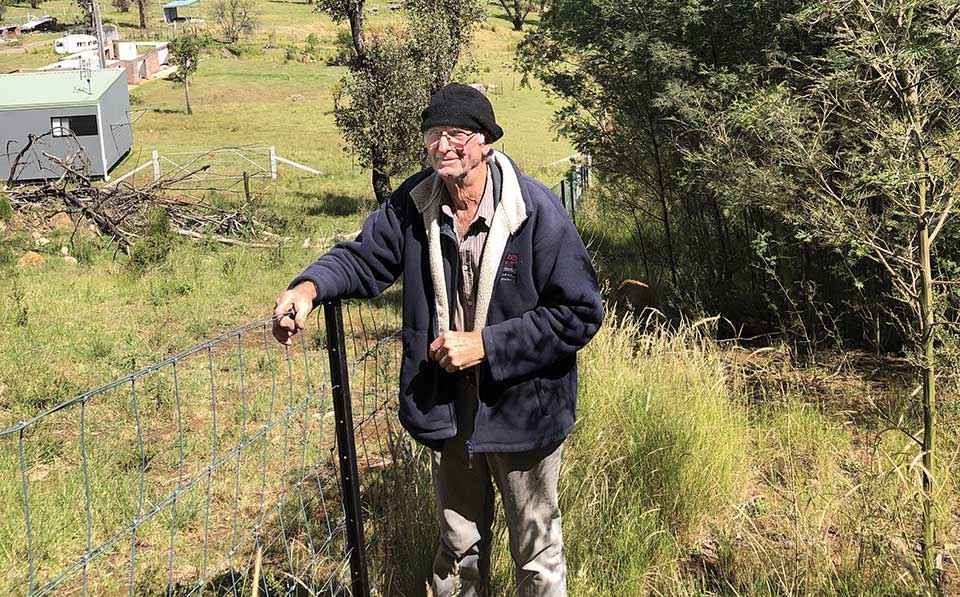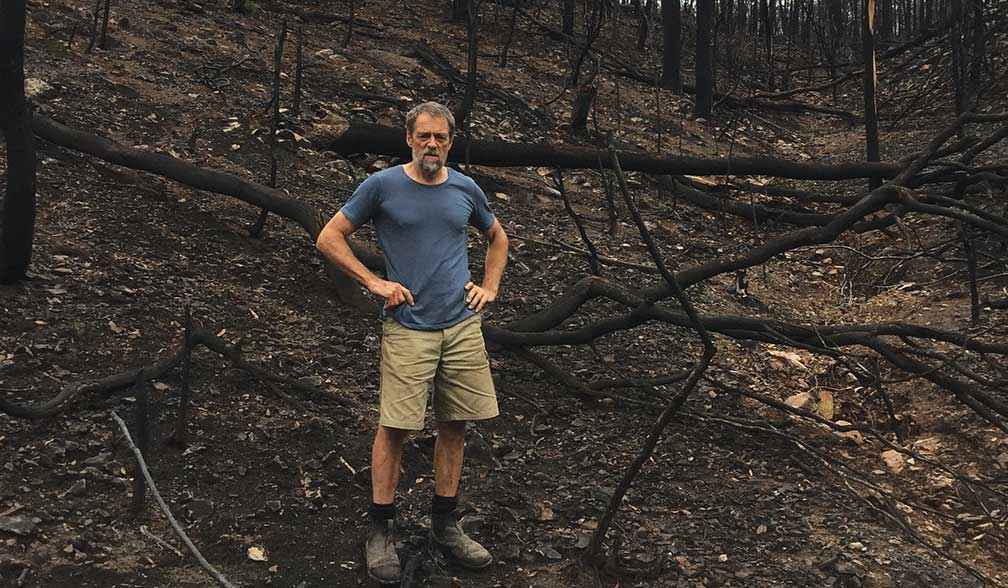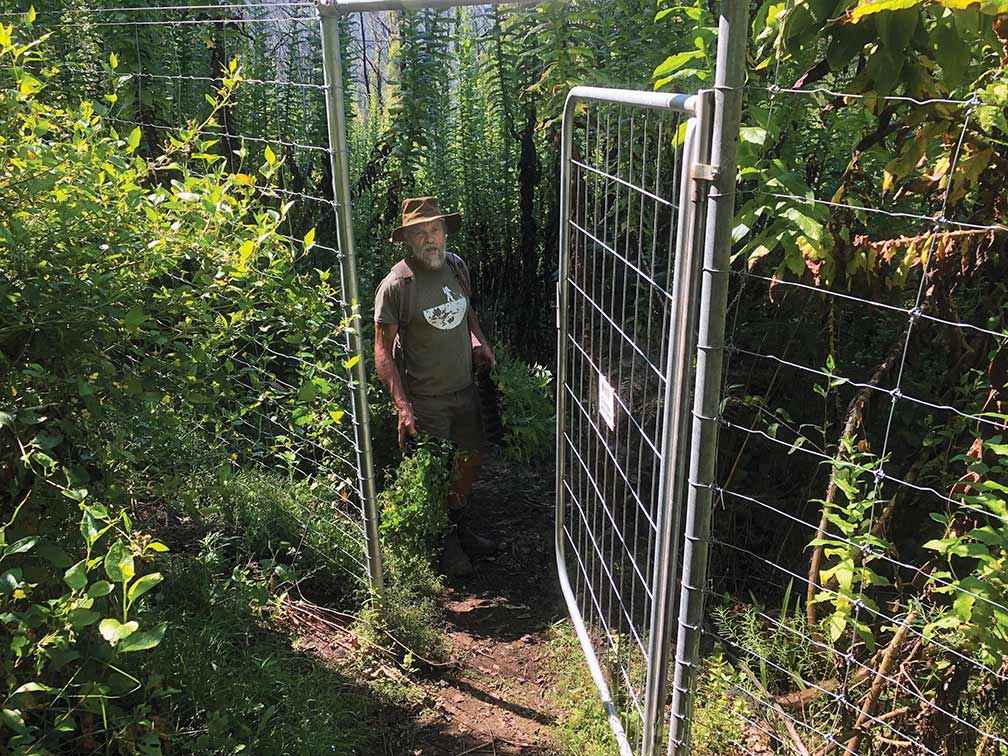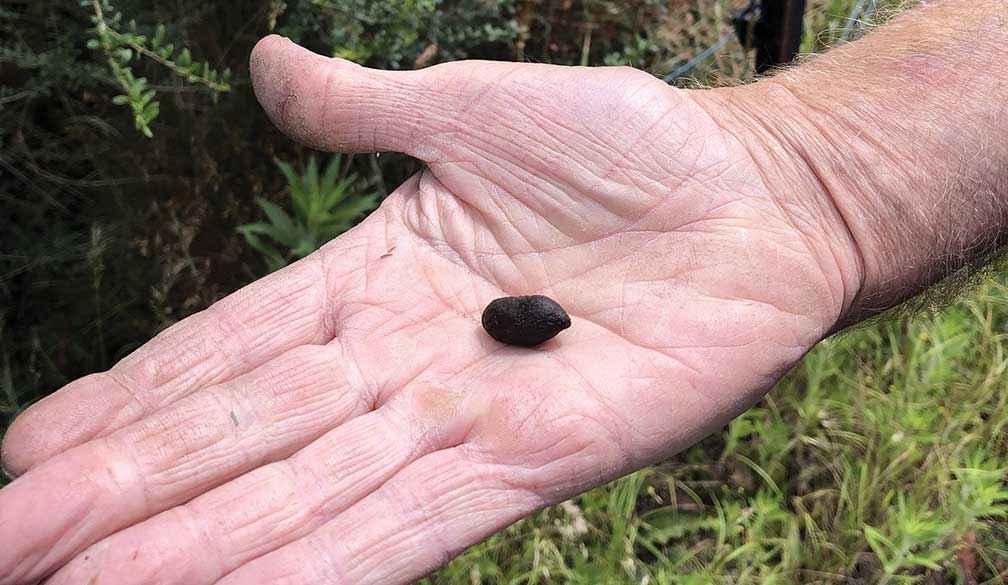Victorian Landcare Magazine - Spring 2024, Issue 88

The catastrophic Black Summer bushfires that started on 21 November 2019 and continued throughout the 2019-20 summer were exceptional in size and impact. Over one million hectares, or 56 per cent, of East Gippsland was burnt.
There were runs of fire with extremely high heat intensity, burning along ridges and through gullies, resulting in significant loss of tree canopy, understorey, and ground cover.
Part of the Victorian Government’s response to the impact of the fires was to provide Biodiversity Bushfire Recovery Grants to groups and individuals to support bushfire recovery activities. The projects funded by these grants also contribute to the targets in Protecting Victoria’s Environment – Biodiversity 2037, the Victorian Government’s plan to stop the decline of our native plants and animals and improve our natural environment.
In this article are two stories, both recipients of Biodiversity Bushfire Recovery Grants, both suffering loss from the fires, both showing grit and determination to recover what was there before the fires, both tackling challenges and both with signs of hope.
Friends of the Upper Nicholson Catchment Incorporated (FUNCi) are an energetic and resilient group of environmental volunteers working in the area between Clifton Creek and Sarsfield. After the 2019-20 Black Summer bushfires much of the landscape in this area was left devoid of vegetation, having suffered medium to high canopy damage with only a 500-metre stretch of riparian zone left intact.
The damage from the bushfires to sections of the Nicholson River’s riparian zone and woodland, known to support species under threat including the powerful owl, greater gliders, and yellow belly gliders, was serious.

Above: Before restoration

Above: FUNCi member John Hermans standing at the rainforest restoration site before and after the revegetation project. A superb lyrebird is now nesting in this area.
FUNCi’s Biodiversity Bushfire Recovery Grant project was designed to assist the process of post fire recovery through targeted revegetation and habitat improvement, and by providing connectivity to the 500-metre stretch of unburnt, intact riparian zone along the Nicholson River.
The project involved erecting areas of exclusion fencing to enable ongoing natural regeneration of vegetation together with planting of native seedlings. The mix included ground cover, understorey, and canopy species to assist in the recovery of habitat for both ground dwelling and arboreal species.
The largest exclusion area saw a one kilometre fence built around a warm temperate rainforest gully. More than 3000 seedlings were planted, and it is now a thriving and biodiverse habitat. The gully has become a nesting site for a superb lyrebird that took up residence close to the river where it is protected from predation of foxes and feral cats.
Smaller exclusion plots on surrounding properties are helping members to learn about the levels of natural regeneration, when browsing from pests such as deer is minimised.
The project wasn’t without its challenges. Member fatigue followed the fires, and just when energy levels increased COVID-19 restrictions affected working bees. Planting efforts were also hampered as was the construction of the rainforest gully fence.
Sourcing contractors was difficult. By the time fencing contractors were secured for the exclusion plots, some areas had become inaccessible and needed alternate solutions.

Above: A positive sign – koala scat found within the sanctuary after fencing was restored.
Access to the correct indigenous tube stock from local nurseries was also an issue with some members growing their own tube stock from seed for the project. Drought and then high rainfall posed further challenges. The rain promoted natural regeneration but made access to some areas difficult and impacted the timing of revegetation efforts.
The group showed remarkable determination and resilience, finding ways to overcome these difficulties. The project has been a success with severely fire-impacted areas revegetated and now providing habitat for ground dwelling and arboreal animals and recreating wildlife corridors that were burnt.
According to FUNCi Secretary Liz Brown the project has also helped the volunteers to recover as a community.
“To witness the early signs of recovery after such large-scale devastation, to hear the noise of the bush once again, and to witness the return of critters both large and small, has supported our members in their own recovery process. To have a lyrebird nest in the fenced off area is icing on the cake,” Liz said.
East Gippsland resident Henry Sonogan’s property is in the hills near the Buchan township, where the Snowy River meets the Buchan River. The bushfires hit this area and Henry’s property hard. Only one shed remained in the aftermath.
In 2003 Henry had fenced off a section of his property for conservation under the Bush Tender biodiversity management program. The 35-hectare area became a sanctuary for many species of birds – both ground and tree dwelling, lots of other wildlife and even koalas who were often spotted in the abundant eucalypts.
On a positive note, I have heard koalas in the area and was extremely excited to find a scat very close to my shed.
All the sanctuary’s fencing and riparian and remnant vegetation was destroyed and needed replacing after the fires. Henry received a Biodiversity Bushfire Recovery Grant to replace the burnt fencing to protect the sanctuary from cattle and pest animals, allowing the biodiversity to recover and create safe habitat for wildlife. Henry couldn’t wait to see the animals return, particularly the koalas.
Construction of the 1.4-kilometre fence was also hampered by COVID-19. Materials were difficult to obtain and took longer than expected to source and deliver to the site. Heavy rain also hindered the work.
The fence was constructed with the help of Blaze Aid volunteers that included people from Melbourne and even overseas visitors who had heard about the fires and were keen to help in the recovery. Henry drilled in the fireproof concrete fence posts and the Blaze Aid volunteers affixed the wire, including the electric fence. Once underway the work was completed in record time.
The first species to flourish was black wattle – a resilient, post-fire pioneer species. With the extra rainfall, the wattle has flourished and is now covering much of the sanctuary, outgrowing other native species. Several options for controlling it are being trialled.
Although Henry feels quite overwhelmed with the difficult task of controlling the wattle, he is excited about the prospect of koalas returning.
“On a positive note, I have heard koalas in the area and was extremely excited to find a scat very close to my shed. I am very much looking forward to seeing the koalas in the sanctuary. I thought it would take much longer for them to inhabit the area, particularly with all the wattles. It sure is a positive sign, and I am pleased after so much heartache,” Henry said.
Lisa Wilson is Communications and Engagement Officer with East Gippsland CMA. For more information go to www.egcma.com.au